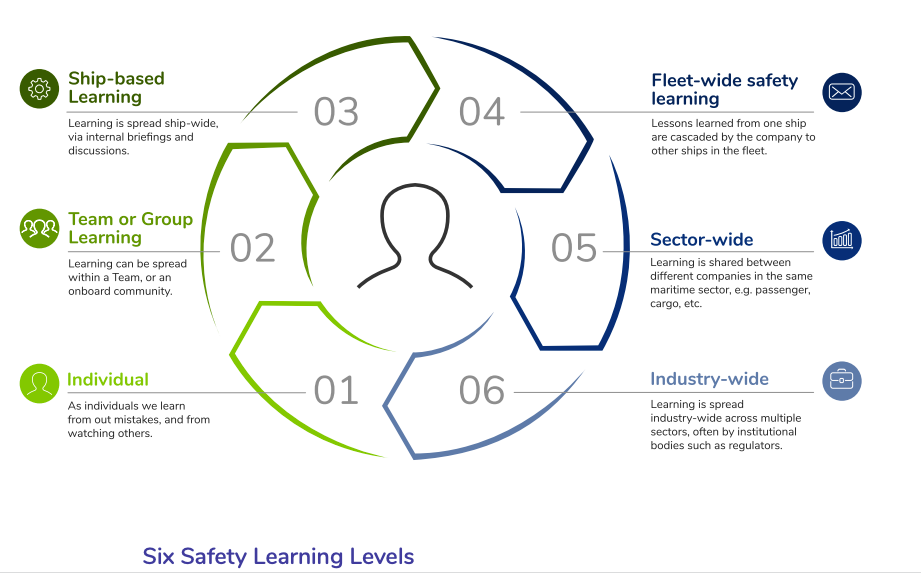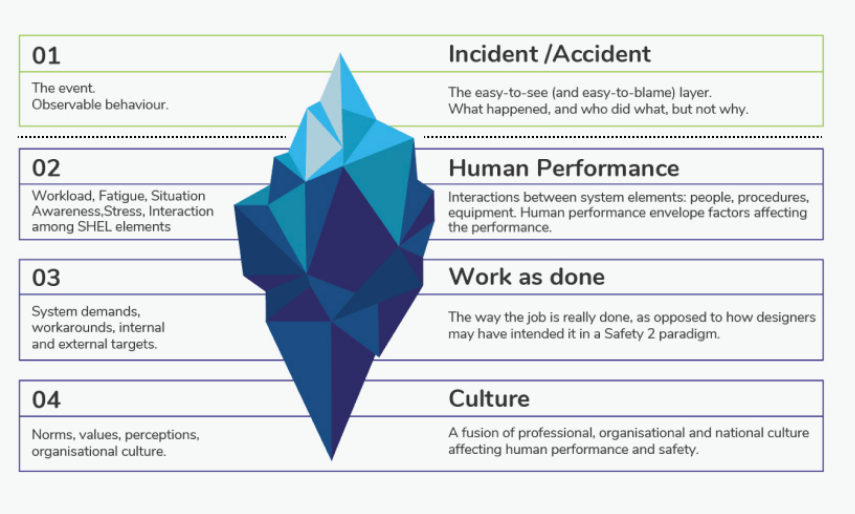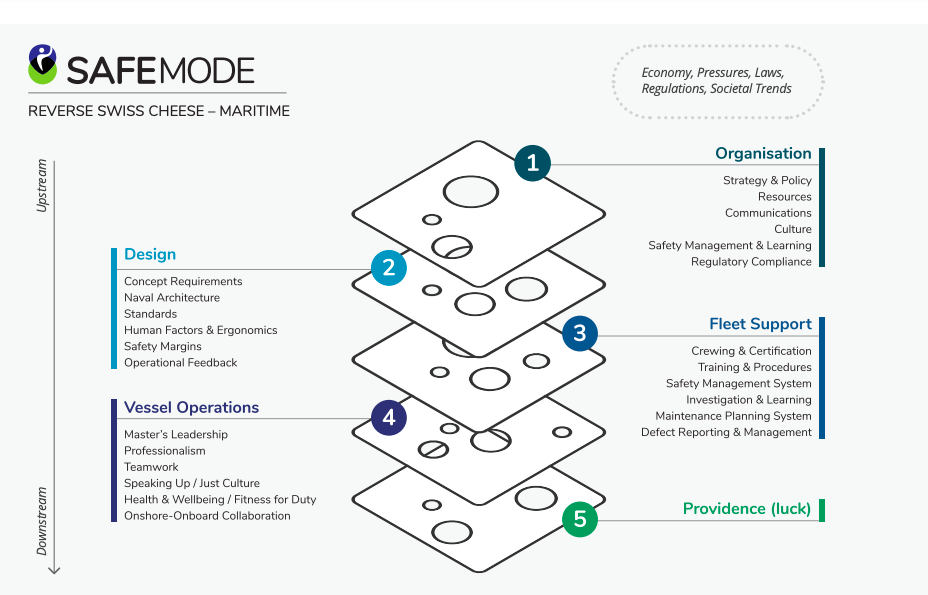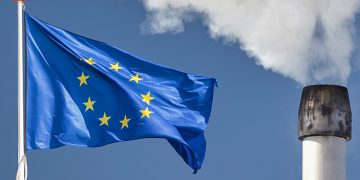Last month, the World Maritime University hosted a webinar to introduce the White Paper “Towards a Safety Learning Culture for the Shipping Industry”, which has been developed within the framework of the EU-funded SAFEMODE project and involves a maritime-aviation partnership.
The White Paper explores Safety Culture through interviews with national investigators and seafarers, as well as discussions with maritime stakeholders like shipping companies, NGOs, and regulators. In addition, the paper emphasizes the importance of a Safety Learning Culture and outlines ten good practices for enhancing safety learning. In conclusion, the paper presents several maritime use cases that illustrate how Safety Learning is being applied today in the shipping industry.
Last year, in an exclusive interview to SAFETY4SEA, Dr. Maria Carrera, Research Associate at the World Maritime University (WMU), had referred to EU-funded project SAFEMODE and its target to develop a Safety Learning Culture framework.
Through structured interviews with stakeholders, the white paper investigated the possible destinations of safety culture for the shipping industry.
Safety Culture is the over-arching concept that embodies Just Culture, Reporting Culture, Learning Culture, and the relatively new Culture of Care arising in the shipping industry. Safety Culture is essentially the priority given to safety, and is hence the motivation for safety at all levels in an organisation, encapsulating ‘the way we do things safely around here,’ even when no one is looking.
… the report reads.
Just Culture, in which people are not punished for honest mistakes, is seen in many industries as a driver and enabler for honest reporting in accidents, incidents and near misses, and hence underpinning a healthy Reporting Culture.
Learning Culture arises from Reporting Culture, and focuses on how people, organisations and entire industries learn from past incidents, accidents and near misses, as well as successes, to become safer. The simple argument is that if you have Just Culture you get good reporting, and if you have good reporting you can learn to be safer, thus leading to a better Safety Culture.
Culture of Care concerns looking after the wellbeing of seafarers and all who work in the industry, founded on respect and empathy for one’s colleagues, and again can be a major enabler for safety and Safety Culture, and reflects the growing global trend in focus on wellbeing of people at work in all industries.

The 10 Safety Learning Approaches
#1 A Common Language (taxonomy)
In order to learn, there must be commonly understood ways of describing events, accidents and the Human Element. The technical term for this is a Taxonomy, which is basically an agreed set of definitions and descriptions
#2 Investigating DifferentlyThe investigation process is clearly key to learning. The actual information entered into a database is the first step leading to what will ultimately be discussed by the company in terms of how to prevent accident recurrence. Incident and accident records can even inform a court of law judging culpability after an accident. Such information critically depends upon what was recorded and stated during the initial investigation.
It is useful to consider the accident ‘iceberg’, as shown below when considering causality and Safety Learning. The events and facts – who did what, when and where, are the surface layer, relatively easy to document. But they in no way tell the whole story.

#3 From a Database, to an Evidence Base, to a Learning Platform
A database can clearly be useful for Safety Learning, as it comprises an evidence base from which the most common and severe accidents, as well as their causes and contributory factors, can emerge. Rather than learning from each individual accident, more general and even system-wide lessons can be drawn by looking across different events, and the resultant lessons can have a more powerful impact on safety.
#4 Shipping’s Ten Most Wanted
The US National Transportation Safety Board (NTSB) has its own top ten, and for example, European air traffic management has its Top 5 risks. Both ‘hit-lists’ are updated annually based on safety progress and incident and accident occurrences. The advantage of a hit-list is a consolidated focus on key safety areas, often across companies and internationally, or segment-wide (e.g. container ships or cruise ships)
#5 Group Learning Review
Group learning reviews do need to be handled carefully, and the investigator will need to judge whether senior officers being present might make other crew members ‘clam up’ and not say anything other than what they believe they are expected to say. It also needs to be ensured that one person does not become the focus of attention as the scapegoat for the incident.Rather than recording it formally, it is about listening; not only the investigator listening to what the crew have to say, but the crew listening to each other’s versions of the event. The outcome should be deeper understanding, and a better idea of what to do next time should similar conditions arise.
#6 Deep Dives
A deep dive is where a group of people try to get to the bottom of an accident or a series of related accidents, to look at it from all angles, to understand it and see what lessons can be drawn from it.
Safety Deep Dives
- Explore a specific accident or incident trend.
- Examine the basis for safety.
- Which barriers are still working?
- Which barriers are no longer working?
- What are the key Human Factors involved (both positive and negative)?
- Have any external factors changed?
- Have internal factors changed (staffing, competency, etc.)?
- Are the procedures still fit for purpose?
- What are the deep systemic factors?
- Where are the hotspots in the fleet?
- Where are there best practices in the fleet?
- What can be shared across the fleet?
#7 Safety Intelligence Sharing
Briefings are critical, as Safety Learning is not so much measured by how much an organisation knows, or how much accident data it has, as by how much has been transmitted effectively to seafarers, so that they can integrate the learning into their working practices, as well as receive the message that the company cares about learning
#8 Safety Forums, Safety Alliances
Safety Alliances between a cluster of companies or organisations can be a powerful way to promote and enhance safety in key areas, especially when those companies put aside competition in certain areas in order to tackle key safety problems. An example of a safety alliance in shipping is the Oil Companies’ International Maritime Forum (OCIMF). Recently, Together in Safety was set up as a non regulatory maritime industry consortium with the common purpose of working together to improve safety performance. Other safety alliances have also been established between several NGOs to drive the international regulatory agenda, as is the case of the Human Element Industry Group (HEIG), whose members as accredited to IMO are dedicated to an increased understanding of the human element in order to improve safety and operations at sea.
#9 Reverse Swiss Cheese Theory
Reversing the Swiss Cheese model is a challenge, and requires the mindset that human error does not only affect those aboard ships, but affects us all. In fact human error is a normal process, the flip-side of human flexibility that is key to our ever-adaptive, and generally successful performance. We all make mistakes. Most mistakes onshore have little consequence. Yet some of them do, as they result in constraints for those at sea. It is difficult to have a Safety Culture and an effective Safety Learning Culture when it is believed that only seafarers make mistakes of any consequence. This shift in mindset is a journey that any industry has to undertake if it is serious about increasing safety
 #10 A Maritime-Focused Human Factors Toolkit
#10 A Maritime-Focused Human Factors Toolkit
The SAFEMODE project is developing a Human Factors Toolkit for the Maritime industry, testing the ‘goodness of fit’ of each technique with maritime case studies and stakeholders. This toolkit can help to improve design of ships, their bridges and engine rooms, as well as enhancing training, procedures, team-working and human-machine interfaces for complex and safety critical operations.
READ SAFEMODE WHITE PAPER HERE






























































Very interesting material to read
All said are true and full agreed
I am really interest and fully agreed that safety culture is has to be our breathing in all the time specially transport industry, because every time all human has to moving safely, feel comfort and also healthy.